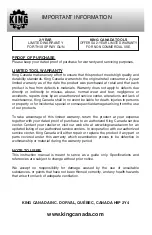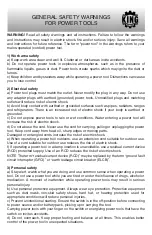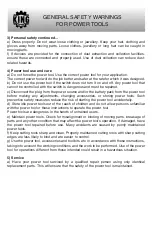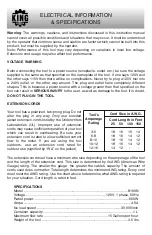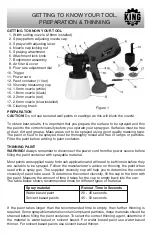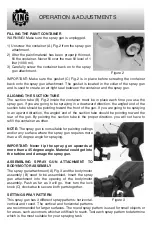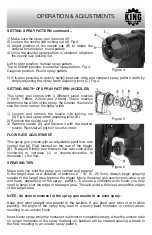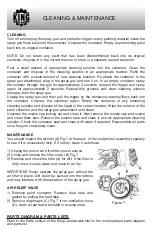
SPECIFIC SAFETY WARNINGS
FOR SPRAY GUNS
SPECIFIC SAFETY INSTRUCTIONS FOR SPRAY GUNS
1) Keep area clean well lit and free of paint or solvent containers, rags, and other
flammable materials. Spontaneous combustion may occur. Fire extinguisher equipment
must be present and working at all times.
2) Provide for good ventilation in the spraying area and for sufficient fresh air in the
complete room. Evaporating flammable solvents create an explosive environment.
3) Do not use materials with a flashpoint below 32° C for spraying and cleaning. Use
water-based materials, non-volatile hydrocarbons or similar materials. Fast evaporating
solvents create an explosive environment.
4) Do not spray in the vicinity of ignition sources, such as static electricity sparks, open
flames, pilot lights, hot objects, engines/motors, cigarettes and sparks from plugging in
or unplugging power cords or operating switches. Such spark sources can ignite the
spraying vicinity/environment.
5) Do not spray any liquid of unknown hazard potential. Unknown materials can create
hazardous conditions.
6) Wear additional protective equipment such as appropriate protective gloves and
protective masks or respirators when spraying or handling chemicals. Wearing
protective equipment for the appropriate conditions reduces the exposure to hazardous
substances.
7) Never point the spray jet against yourself, towards other persons or animals. Keep your
hands and other body parts away from the spray jet. If the spray jet should penetrate
the skin, seek medical attention immediately. The material being sprayed can even
penetrate the skin through a glove and be injected into your body.
8) Do not treat injection as a simple cut. High pressure spray is able to inject toxins into
the body and cause serious bodily injury. In the event that injection occurs, seek
medical attention immediately.
9) Always disconnect power cord from the power source before filling the paint container
or cleaning the spray gun.


